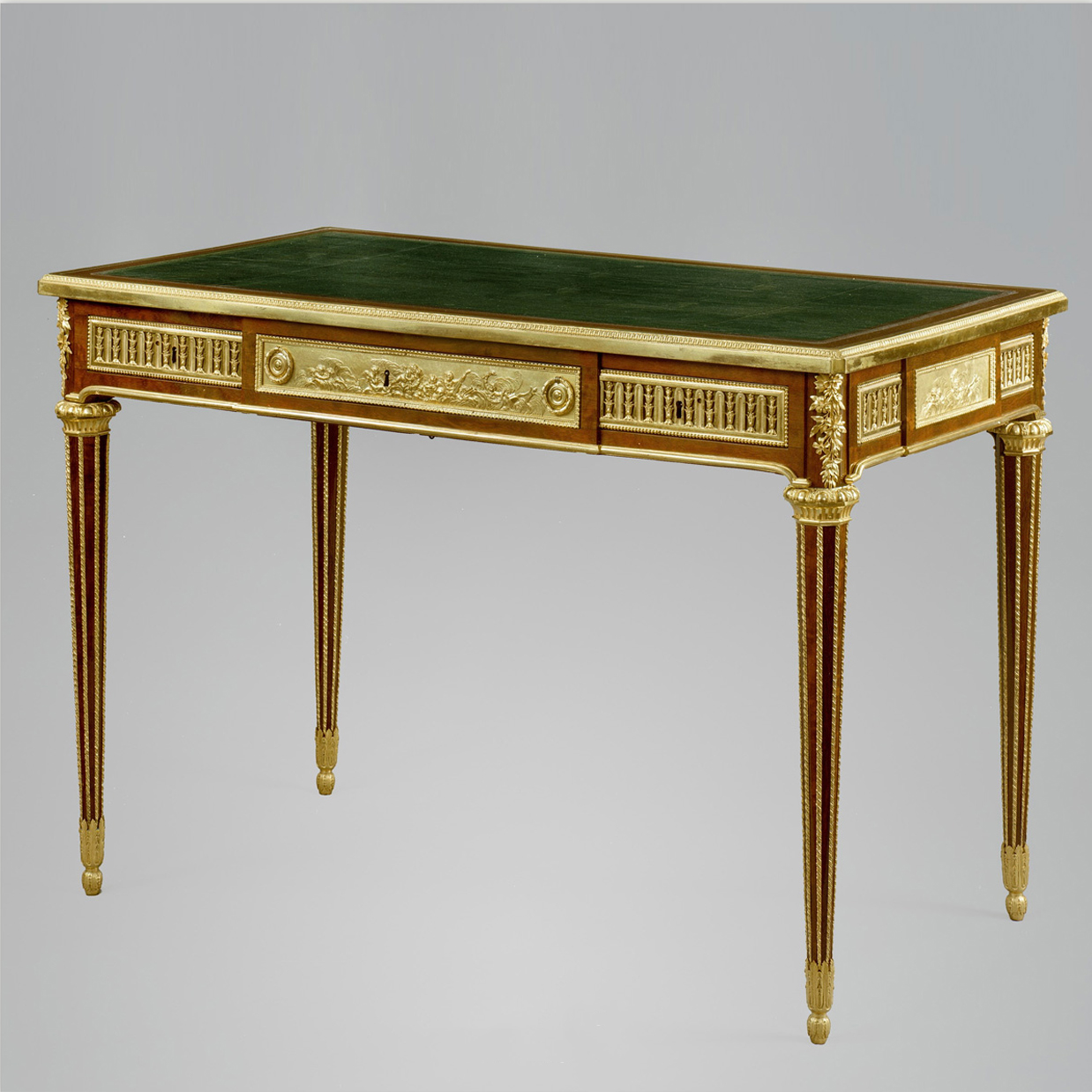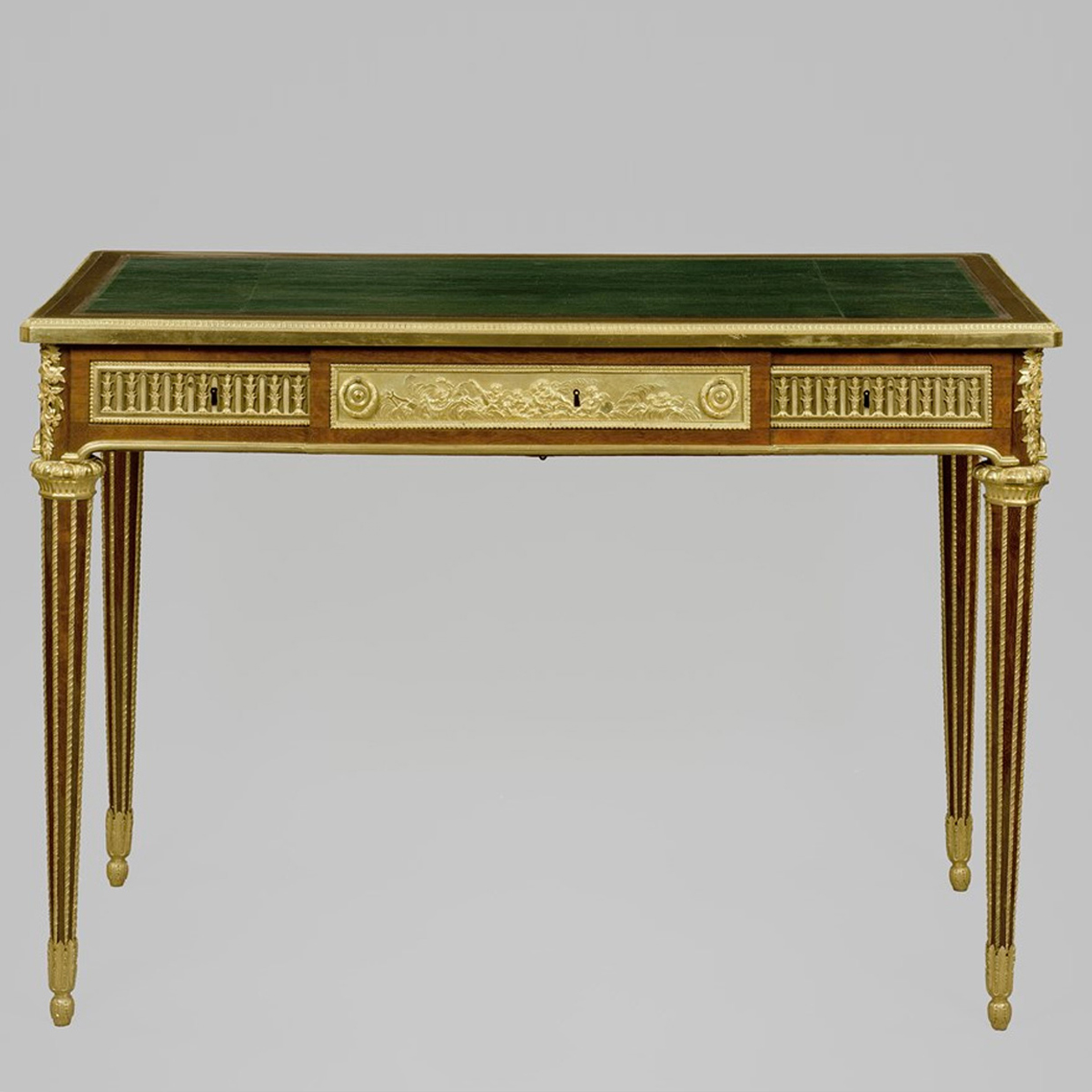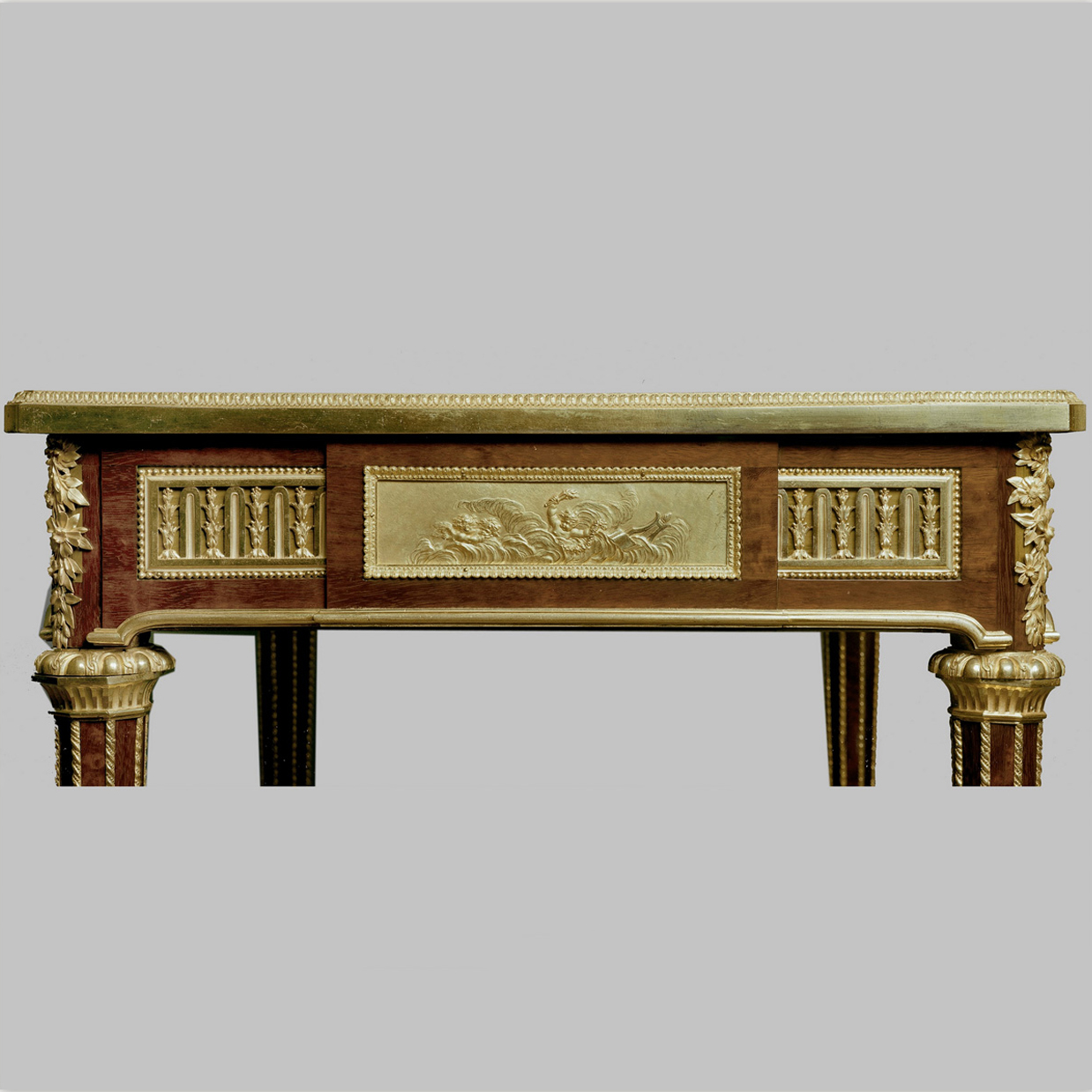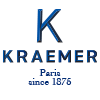IN THE MUSEUMS
Writing desk – Louis XVI era
Writing desk made with amaranth and tinted sycamore veneering.
It features chiselled, gilded openwork bronze ornaments.
By Jean-Henri Riesener (1734 – 1806) Coat of arms of the Queen’s Garde-Meuble and of the château de Trianon.
Displayed in the Cabinet Doré.
Acquired with the sponsorship of L.V.M.H and Sanofi-Avantis.
Château de Versailles.
Jean-Henri Riesener was one of the most talented cabinetmakers during the reign of Louis XVI. His furniture pieces are true works of art. The bronze ornaments are extremely refined and detailed. This writing desk was intended for the living room of the Queen’s House at the Queen’s Hamlet in Versailles, as suggested by the number “84”. This number indicates where the writing desk was located in the estate.
Though this masterpiece remained anonymous, it is characteristic of Riesener’s style. It features the circular mark of Marie-Antoinette’s Garde-meuble, which is proof of its royal origin. This mark comes with the initials “CT” underneath a carved crown, which indicates that the writing desk was intended for the Petit Trianon.
During the reign of Louis XVI, bronze ornaments were meant to eclipse the marquetry work, which tended to stand out the most. Riesener made use of simple, yet luxurious tinted amaranth and sycamore veneering in order to enhance the bronze ornaments and make them the true centrepiece. He even included a low relief at the centre of the frieze; it represents putti playing music in the sky. Riesener was also very famous for his attention to detail. The feet are adorned with coiling stems made of gilded bronze, and delicate blooming branches can be seen on the fretwork.
One of the best cabinetmakers of his time, Riesener created a true masterpiece which showcases the full extent of his talent.




